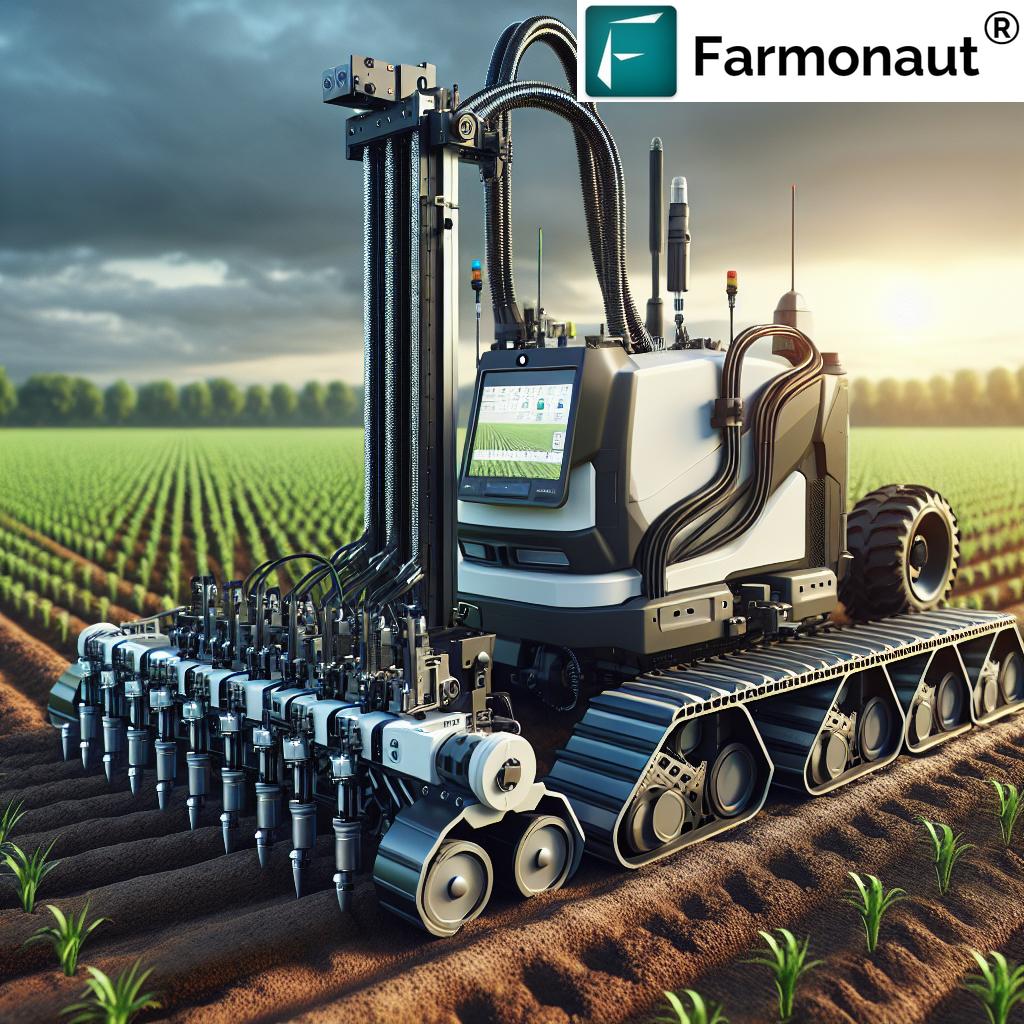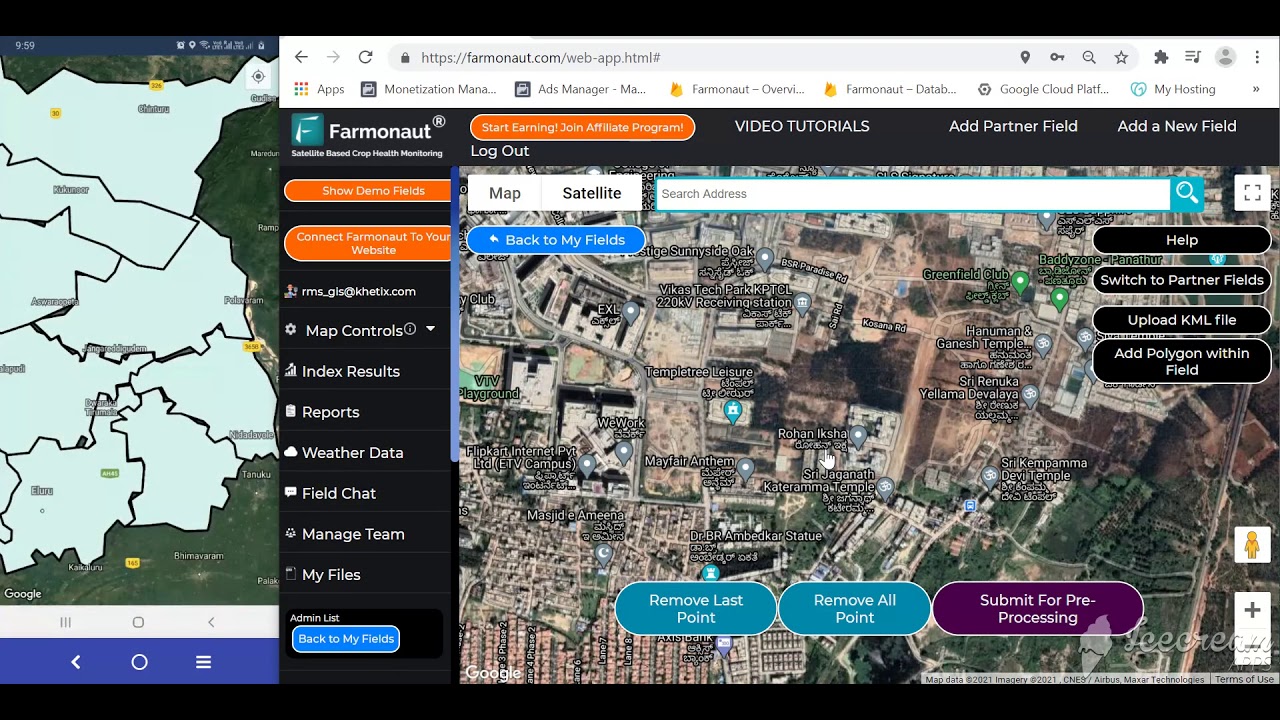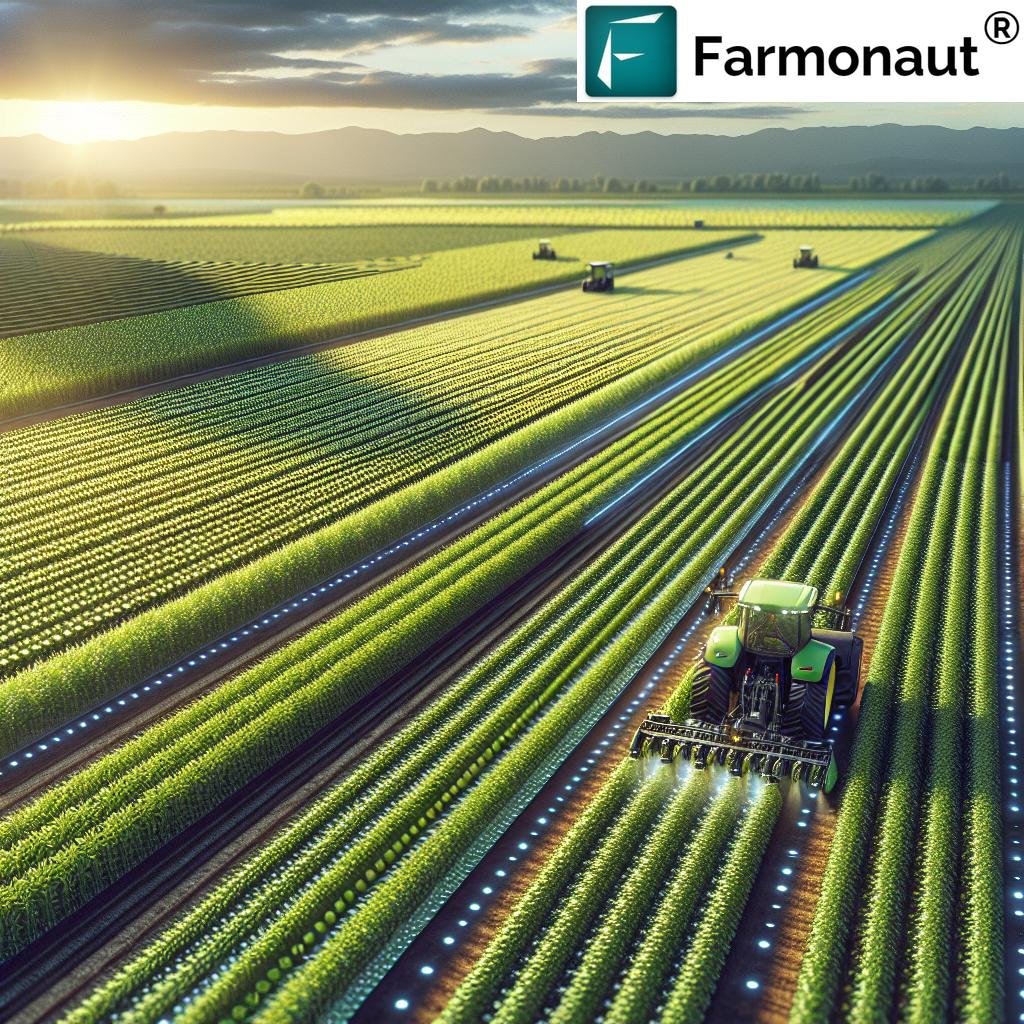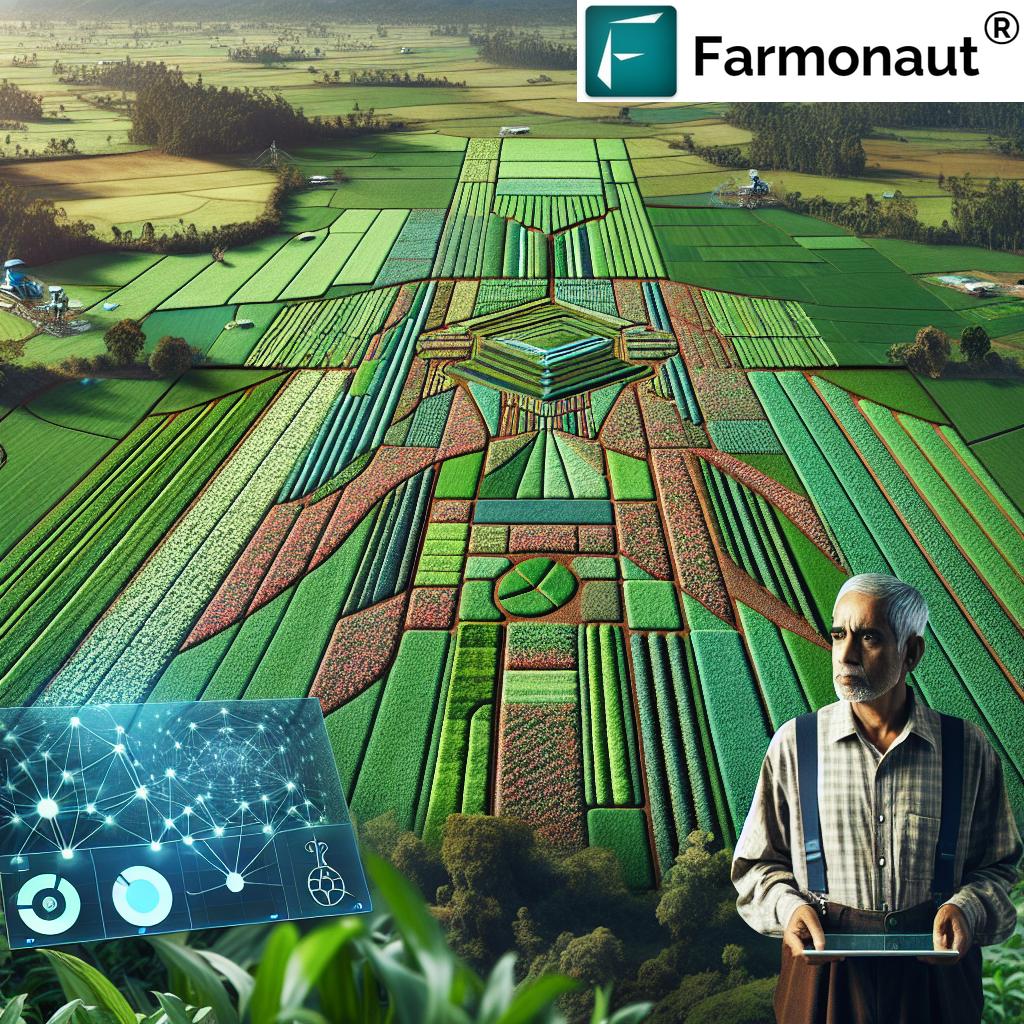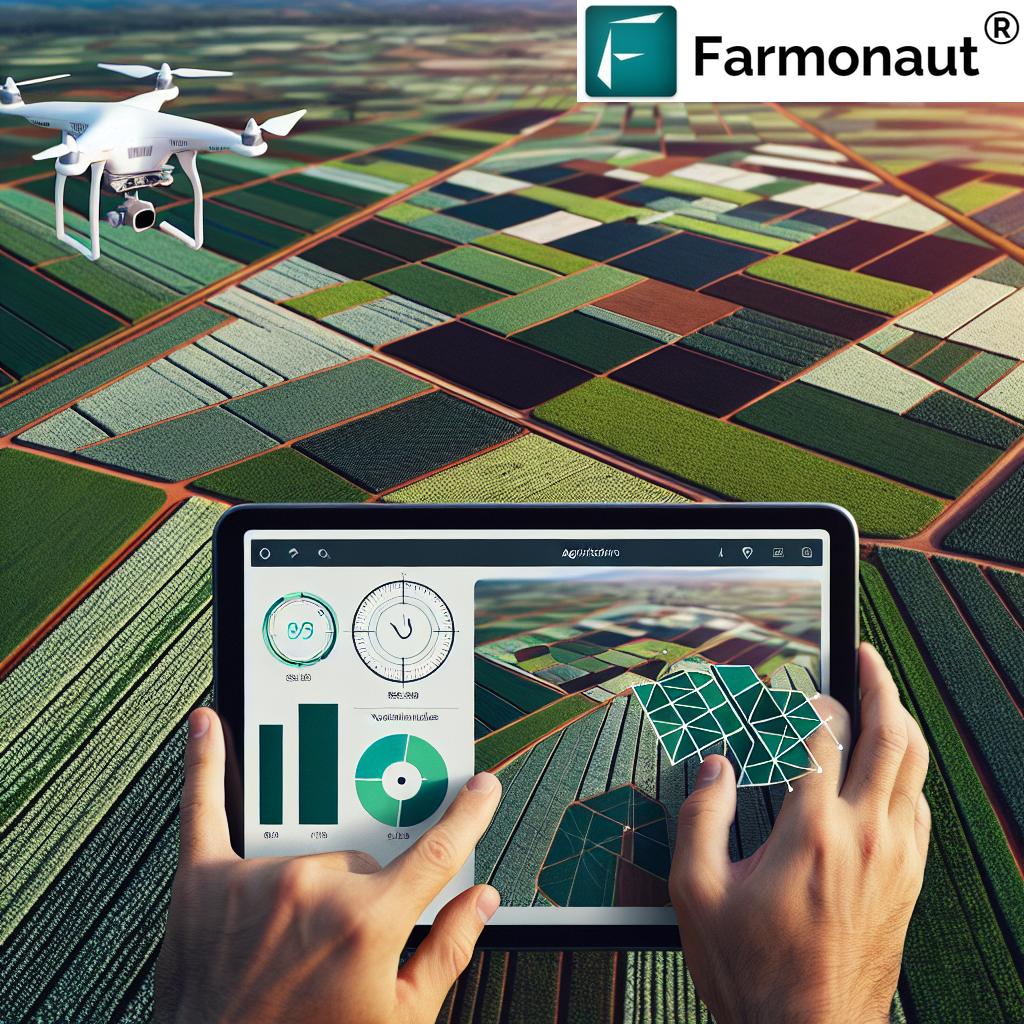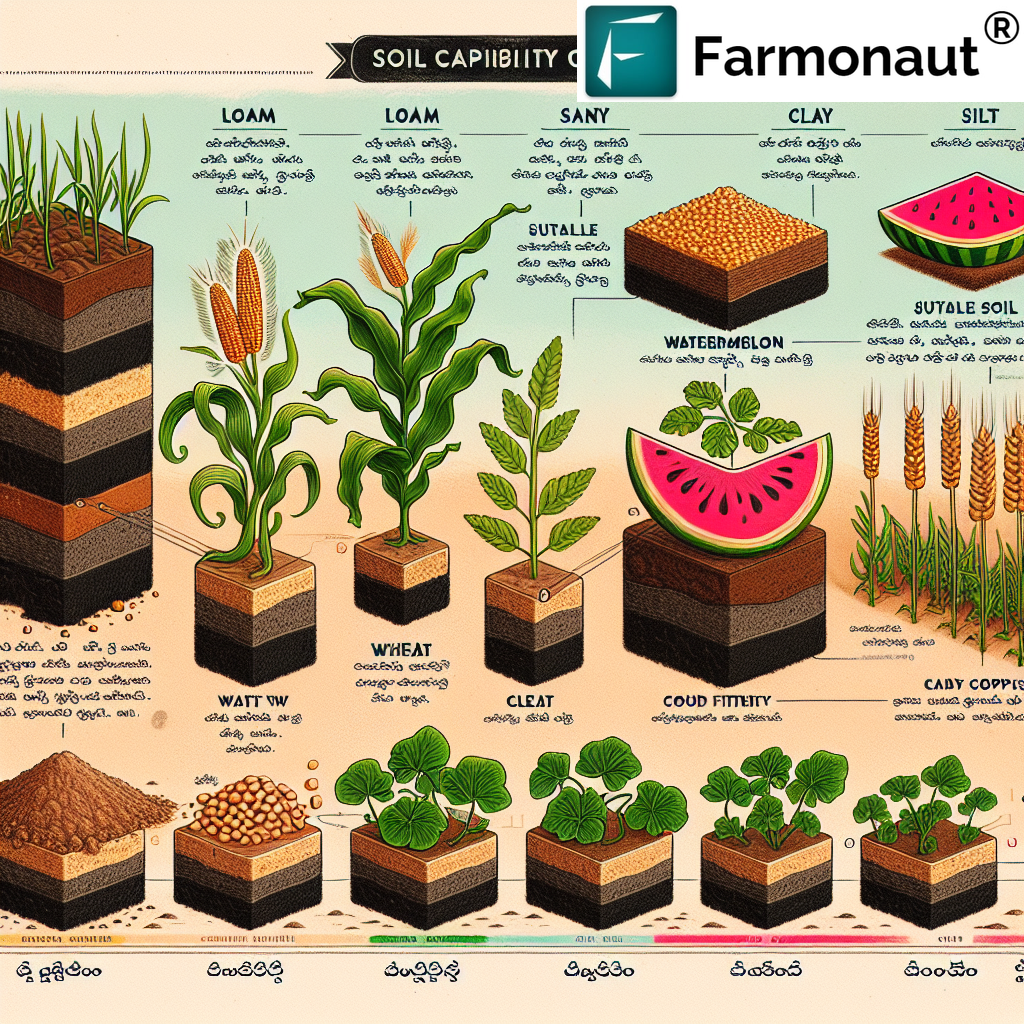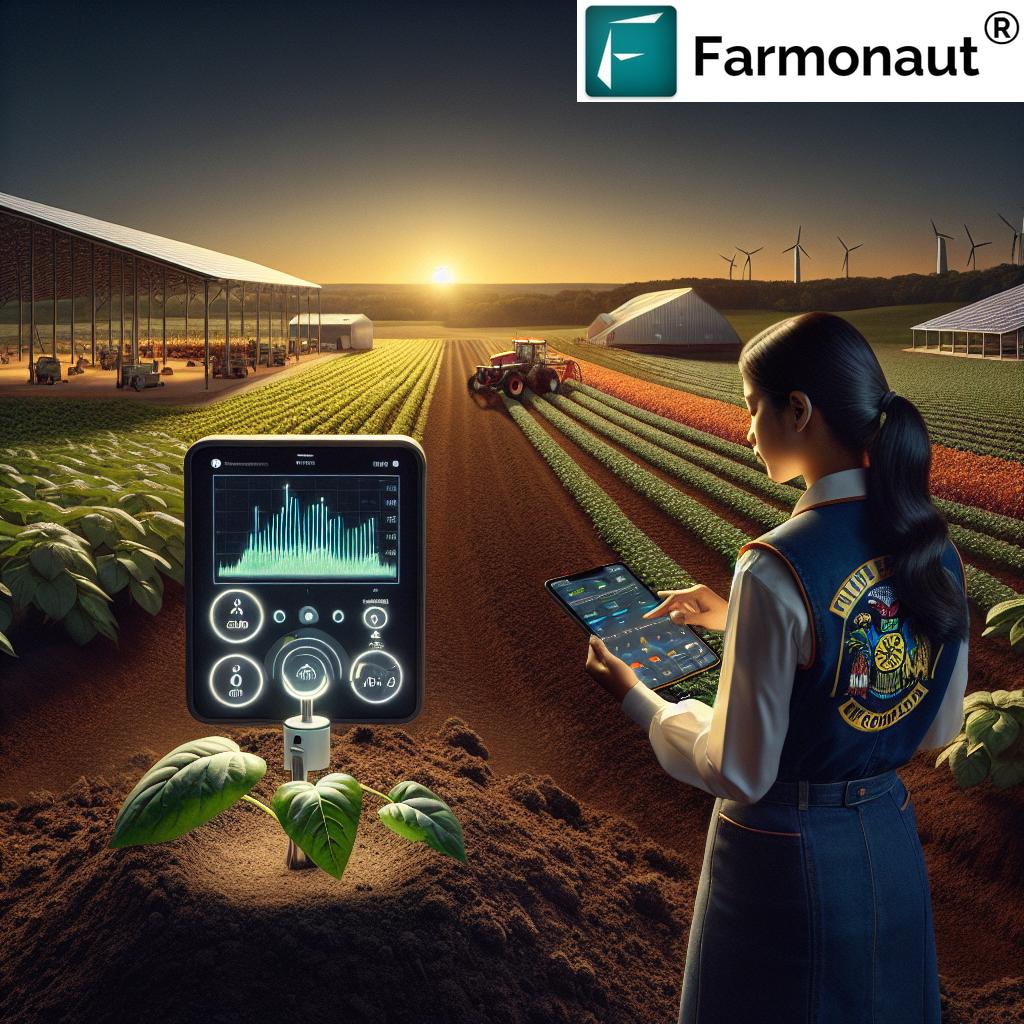Soil Sampling Machine: 7 Shocking Benefits Revealed!
“Soil sampling machines can increase data collection speed by up to 60% compared to traditional manual methods.”
Introduction: The Evolution of Soil Sampling in Agriculture
In the rapidly advancing world of agriculture and forestry, the demand for accurate, efficient, and actionable field data is at an all-time high. At the heart of precise farm management and sustainable crop production lies a fundamental practice: soil sampling. This critical process provides us with deep insights into soil health, nutrient content, and overall fertility—empowering informed land use planning, optimized fertilization, and superior crop health.
As technology propels us into a new era of precision agriculture, specialized soil sampling machines are revolutionizing the way we collect, analyze, and manage soil data. In this in-depth guide, we’ll explore the 7 shocking benefits of these machines, comparing modern systems with traditional soil sampling methods while spotlighting the impact of advanced soil sampling technology across all types of farming operations.
Traditional Soil Sampling Methods: Strengths and Shortcomings
For decades, traditional soil sampling methods have involved manual techniques that utilize basic tools such as soil probes and augers. While these methods have been effective in gathering samples for analysis, they pose several challenges—especially when scaling operations or seeking data consistency.
Challenges with Manual Soil Sampling Techniques
- Labor-Intensive: Manual sampling requires significant labor, increasing costs for large operations.
- Variability: Human error can introduce inconsistencies in sampling depth and handling, affecting data quality and analysis.
- Limited Efficiency: The process is slow; collecting and labeling many soil cores quickly becomes impractical for large fields.
- Data Inaccuracy: Inconsistent sampling intervals, depths, or processes result in biased or unreliable soil health analysis.
- Time-Consuming: Manual methods require multiple hours per hectare, slowing down data collection and response time in dynamic farm operations.
In today’s data-driven agriculture landscape, these limitations can significantly hinder precise crop management, resource optimization, and sustainable land use planning.
The Introduction of Soil Sampling Machines: A Turning Point in Data Collection
To address the shortcomings of manual approaches, soil sampling machines—also known as automated soil sampling systems—have been developed. By automating the sampling process, these machines introduce a new level of efficiency, precision, and data uniformity to agricultural and forestry practices.
- Uniformity: Machines ensure consistent sampling depths and intervals across extensive fields.
- Speed: Drastically reduced labor time and higher daily sample throughput makes them essential for large-scale operations.
- Data Quality: Advanced features like GPS integration and real-time data management enhance both quality and organization of results.
As the agricultural sector seeks greater transparency and actionable insights for crop health monitoring and sustainable resource management, the adoption of soil sampling machines is accelerating worldwide.
Let us explore the shockingly innovative features that set these machines apart from their manual predecessors.
Key Features of Advanced Soil Sampling Machines: Redefining Soil Data Collection
Modern soil sampling machines combine multiple cutting-edge technologies to provide accurate, efficient, and comprehensive results for crop health analysis and land management. Core features include:
-
Automated Sampling Processes:
- Machines like the Falcon Automated Soil Sampling System use programmed routines to collect soil cores at set intervals, removing human error and increasing sampling efficiency.
-
Adjustable Sampling Depths:
- Wintex 3000 and similar machines allow customizable sampling depths, so we can match requirements for different crops or soil conditions.
-
Hydraulic Systems:
- Integrated hydraulic systems help machines penetrate various soil types, including compacted or frozen soils, ensuring uniform sample collection (Wintex 1000s).
-
GPS Integration (Precision Mapping):
- GPS-enabled machines georeference samples with pinpoint accuracy, making it possible to map variability and apply precision agriculture technology across entire fields.
-
Automated Data Management:
- Many machines come with integrated systems that store, organize, and streamline soil sample data—reducing risk of information loss and expediting reporting workflow.
These features lay the groundwork for the undeniable benefits of automated soil sampling in modern agriculture and forestry, directly impacting crop productivity and resource management.
“Precision soil sampling technology can improve nutrient management accuracy by over 40%, optimizing crop health and yield.”
Soil Sampling Machine: 7 Shocking Benefits Revealed
Harnessing the power of advanced soil sampling machines brings a transformative shift in how we understand and manage our fields—resulting in measurable improvements across the agricultural value chain. Let’s examine each benefit in detail:
1. Dramatic Efficiency Gains
Automating the sampling process supercharges efficiency, enabling rapid collection of a high volume of samples:
- Up to 60% faster data collection than manual methods, as revealed in recent research studies.
- Consistent intervals and sampling depths without frequent stops or labor changeover.
- Large fields and forestry plots covered in a fraction of the time required for manual operations.
Soil sampling for agriculture has never been so time-efficient!
2. Superior Sampling Accuracy
Removing subjective human judgment improves precision at every step:
- Uniform sampling depths guarantee that nutrient content analysis and soil health assessments are highly reliable.
- Reduced human error minimizes distortion in data, enabling more effective crop management strategies.
- Consistent methodology supports year-to-year tracking of soil health and performance metrics.
This foundation is essential for precision agriculture technology and customized fertilization planning.
3. Intelligent Data Management & Integration
Modern machines streamline soil data management by integrating digital reporting systems:
- All sample data is catalogued and georeferenced with GPS coordinates—essential for field mapping and precision applications.
- Instant transfer to farm management platforms like Farmonaut for further analysis and intervention.
- Reduce information loss, paper trails, and administrative errors in operations.
- Easily organize, store, and report on environmental, crop, and soil health metrics.
Integrated data management improves overall quality and readiness for compliance or audit scenarios.
Explore Farmonaut’s Large-Scale Farm Management Solutions for seamless integration of field data with satellite-based crop health insights.
4. Cost-Effectiveness & Resource Optimization
By speeding up sampling operations and improving data accuracy:
- Labor costs plummet—fewer staff required per hectare sampled.
- Reduced waste: Data-driven, targeted fertilization and resource allocation reduce unnecessary input costs.
- Lowered equipment downtime with well-maintained machines and automated processes.
- Better return on investment via increased yields and crop health.
- For agribusinesses and large-scale farmers, this advantage is amplified, especially when using digital Farmonaut Fleet Management tools to oversee logistics and machine maintenance.
5. Enhanced Soil Health Analysis
Consistent, high-quality data enables advanced soil health analysis:
- Greater sample density delivers more granular information on soil variability, structure, and nutrient content.
- Supports variable-rate fertilization and precision planting—ensuring inputs directly benefit crop health and yield.
- Enables AI-driven advisory (like Farmonaut’s Jeevn AI System) to process multiple data layers for enhanced recommendations and risk mitigation strategies.
- Farmonaut’s platform even adds an extra layer—leveraging satellite imagery and carbon footprinting insights for a holistic approach to sustainable land use and environmental management.
These advances support individualized crop nutrition, pest management, and irrigation practices—not just for row crops, but also plantation and forestry advisory requirements.
6. Environmental Sustainability and Traceability
Accurate and organized soil data helps our industry operate more sustainably:
- Targeted application of fertilizer, amendments, and chemicals—reducing runoff and environmental impact.
- Support for sustainability certifications through digital audit trails of soil sampling, traceability, and input use.
- Optimized land planning helps preserve natural resources and minimize overfarming or degradation.
These advances are crucial as regulations and consumer demand for traceable, sustainable food products continue to rise globally.
7. Future-Proof Precision Agriculture with Soil Sampling Machines
The future of agriculture is digital, connected, and autonomous. Today’s soil sampling machines:
- Integrate seamlessly with precision agriculture technologies such as variable-rate application, remote sensing, and satellite-based platforms like Farmonaut.
- Are evolving toward real-time data analysis and fully autonomous sampling systems (arxiv), making field scouting more precise and labor-free.
- Prepare our fields and forests to meet the demands of global food security, changing climate, and sustainability expectations.
- Modern solutions, like the Farmonaut Crop Loan and Insurance Module, further leverage secure digital soil and crop records for easier financial access and lower fraud risk.
Adopting soil sampling machines is a decisive leap toward smarter, more resilient, and more productive agricultural and forestry systems.
Benefit Comparison Table: Soil Sampling Machines vs Traditional Methods
| Benefit | Traditional Sampling Method | Soil Sampling Machine | Impact on Crop Health |
|---|---|---|---|
| Efficiency | 4-8 hours/ha; high labor input; 35-60 samples/day | 1.5-3 hours/ha; low labor; up to 120 samples/day | Rapid, actionable interventions in crop cycles |
| Accuracy | ~70% (variable due to human error, inconsistent depths) | 95%+ (consistent depths/intervals, minimal error) | Improved nutrient diagnosis & fertilizer targeting |
| Data Management | Paper-based/log sheets, slow reporting | Digital, integrated; real-time data uploads | Better tracking, planning, and decision support |
| Time Savings | One field/day possible; lag in results | Multiple fields/day possible | Faster correction of deficiencies/disease |
| Cost Savings | High recurring labor cost/resources consumed | Lower cost per sample; less staff/equipment | Increases profitability through yield optimization |
| Sustainability | Limited ability for traceability or validation | Full digital audit trails; easy traceability | Supports certifications, regulatory compliance |
| Ease of Use | Requires skilled labor; physically demanding | Minimal training; operator friendly | Frees time for other management activities |
How Farmonaut Powers Precision Agriculture Through Data Integration
As we adopt emerging soil sampling methods, integrating the resulting soil data with powerful management platforms amplifies the benefits further. Farmonaut is at the vanguard—offering a comprehensive, satellite-based farm management ecosystem tailored for farmers, plantations, forestry operations, and agribusinesses.
- Real-Time Crop Health Monitoring: Satellite imagery delivers continuous, high-resolution crop health insights—NDVI, soil moisture, weather forecasting—for smarter input decisions and minimized crop losses.
- Jeevn AI Advisory System: Receives soil sampling data and instantaneously suggests strategic interventions for precision agriculture operations.
- Blockchain-Based Traceability: Ensure every field data point (including soil records) is tamper-proof and verifiable—essential for supply chain transparency.
- Fleet, Resource & Carbon Footprint Management: Optimize machinery and lower emissions with digital fleet tracking and real-time carbon footprinting.
- Platform & Mobile Accessibility: Use via Android, iOS, web app, or API integration for custom workflows and large-scale management.
With proven scalability and affordable subscription packages (see below), Farmonaut’s platform bridges the gap between advanced soil sampling and actionable farm management for users of all sizes.
Crucial Considerations When Choosing Soil Sampling Machines
Selecting the right soil sampling machine is an investment that must address your operational requirements, field conditions, and budget. Here’s what we recommend analyzing:
- Soil Types & Field Conditions: Complex or compacted soils demand robust hydraulic or heavy-duty designs. Be mindful of rocks, slopes, and seasonal accessibility.
- Depth & Interval Flexibility: Ensure machines provide adjustable sampling depths that align with your crop or forestry requirements (e.g., shallow for row crops, deeper for tree crops).
- Data Management Requirements: Integrated GPS and cloud reporting systems simplify digital data collection, especially when pairing with precision agriculture technology platforms like Farmonaut.
- Budget Constraints: Analyze not just initial machine cost, but also ongoing maintenance, support, and ROI based on operations scale.
- Maintenance & Support: Opt for machines with accessible maintenance needs, robust manufacturer support, and compatibility with your fleet management protocols.
- Scale & Automation: For large operations, prioritize fully or semi-automated soil sampling systems for maximum throughput and efficiency.
Proper selection ensures long-term efficiency, high quality samples, and a strong foundation for your precision agriculture strategy.
Future Trends: The Next Wave of Soil Sampling Technology
The field of soil sampling is advancing rapidly. Each year brings new integrations, increased automation, and more intelligent systems that transform how we collect, interpret, and act on soil data.
Top Innovations to Watch:
- Precision Agriculture Technology Integration: Soil sampling machines are now part of larger systems—directly feeding variable-rate fertilization and irrigation platforms with real-time data.
- AI-Driven Real-Time Analysis: Devices and platforms (like Farmonaut Jeevn AI) utilize artificial intelligence to generate on-the-fly soil health analysis and adaptive management cues (See research paper).
- Autonomous Sampling Systems: Self-navigating robots are emerging, cutting labor requirements and boosting sampling accuracy—even in remote or uneven terrains (arXiv 2024 Study).
- Sustainability & Carbon Tracking: Automated soil sampling will increasingly support carbon footprint analysis, sustainable certifications, and traceable supply chains.
By investing in cutting-edge sampling and management tools, we future-proof our operations and empower the next generation of sustainable food and fiber production.
Frequently Asked Questions: Soil Sampling Machines and Modern Agriculture
How do automated soil sampling machines improve data quality?
Automated soil sampling machines ensure uniform sampling depths and intervals, eliminate most human errors, and digitally store georeferenced data. This results in far more reliable datasets for accurate soil health analysis and crop management planning.
Can soil sampling machines operate in challenging soil conditions?
Yes. Many modern machines are equipped with hydraulic systems that penetrate various soil types—including compacted, frozen, or rocky soils. Models with adjustable sampling depths can be customized for specific requirements and conditions.
How does GPS integration benefit soil sampling processes?
GPS integration enables each sample to be georeferenced, allowing for precise mapping of soil variability across the field. This supports variable-rate fertilization, targeted interventions, and detailed long-term monitoring for optimal crop health and land use planning.
Is data collected from soil sampling machines compatible with advanced farm management systems?
Absolutely. Most soil sampling machines offer data export features compatible with digital farm management platforms like Farmonaut, allowing seamless integration, advanced analysis, and all-in-one field tracking.
How do I select the right soil sampling machine for my farm or forestry operation?
Assess your field scale, soil types, preferred sampling depths, automation needs, and budget. Consult the manufacturer’s specifications, and consider compatibility with your management tools and digital reporting platforms such as Farmonaut.
Can I monitor the environmental impact and traceability of my farm operation using this technology?
Yes. Digital soil sampling, when integrated with sustainability and traceability platforms (including carbon footprinting and traceability modules like those from Farmonaut), supports rigorous environmental stewardship and consumer transparency.
Conclusion: Embracing Data-Driven Efficiency in Modern Agriculture
The introduction of soil sampling machines and precision agriculture technology marks a watershed moment in the evolution of agriculture and forestry management. By automating the sampling process, ensuring consistent data quality, and integrating with digital management systems like Farmonaut, we open new possibilities for sustainable production, environmental stewardship, and increased profitability.
Each of the 7 benefits—from drastically improved efficiency and labor savings to superior soil health analysis and real-time farm insights—underscores the urgency of upgrading to modern soil sampling methods.
Whether you are a smallholder farmer, a large agribusiness, a forestry operation, or a government agency, these advances put the keys to sustainable, productive, and traceable agriculture firmly within your reach.
Ready to accelerate your soil data journey?
Explore Farmonaut’s Crop, Soil, and Farm Management Solutions Today!






